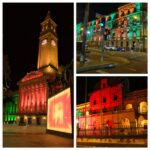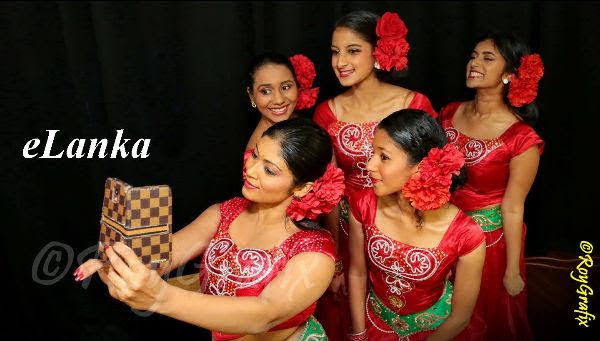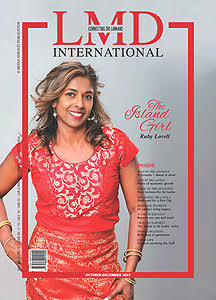Colonial gems of Ratnapura-BY MAHIL WIJESINGHE
Ratnapura, known as Minipura or the City of Gems is my adopted hometown. After the lapse of a year, I am back in Ratnapura to explore the city and get a glimpse of the culture, history and life of the people in the region.
Long ago, Sinbad, the sailor, reached the island of Serendib and travelled inland to a town through an archway studded with dazzling emeralds, topaz and sapphires. It was a fabulous city where beautiful women were adorned in the most expensive jewellery, studded with rubies and cat’s eye.
It was Minipura or the City of Gems, nestling on the banks of the Kalu Ganga. Sri Lanka’s gems are said to be the best in the world. This is why King Solomon is supposed to have searched the island for jewels that would win the heart of Queen Sheba.
However, since the beginning of the 16th century, the country was invaded, first, by the Portuguese, then the Dutch and finally by the British. All these European colonial rulers’ ambition was to establish a trading settlement in the country.
 The British introduced coffee as a plantation crop in the mid-1830s. While the plantation agriculture fashioned by the British still prevails, three crops, tea, rubber and coconut – formed the foundations of the economy. The British dominated the tea trade and also had a stronghold in rubber from the 1880s until some time after Independence.
The British introduced coffee as a plantation crop in the mid-1830s. While the plantation agriculture fashioned by the British still prevails, three crops, tea, rubber and coconut – formed the foundations of the economy. The British dominated the tea trade and also had a stronghold in rubber from the 1880s until some time after Independence.
In the 1900s, the British planters moved inland and established tea and rubber plantations in and around Ratnapura where they were able to get a better climatic atmosphere in the mist-laden mountain ranges, for these agricultural crops. Hence, the city of Ratnapura became a hub of colonial planters in the South-Western region of the island, known as Sabaragamuwa.
Ratnapura can boast of being close to quite a few colonial landmark structures. Visiting these heritage icons is a good way to entertain yourself and exercise while enriching your understanding of their glorious past. Here are a few historically significant structures within the radius of a kilometre from the Ratnapura city, perfect for sightseeing and exploring.
Clock tower
Any visitor to Ratnapura would not miss the colonial clock tower. Located in the heart of the city, this British built clock tower was once a magnificent landmark. This elaborately moulded clock tower was erected by the British at the end of World War I, 1914-1918, to commemorate their men from the Ratnapura district who sacrificed their lives to the war. The names of the War Heroes are depicted on the stone plaque that stands beneath the tower.
Of the clock towers in cities around the country, the Ratnapura clock tower is one of the oldest, having been opened in 1918. Today, the clock tower remains a famous landmark, ticking away the seconds, and depicting the accurate time to the city dwellers, in their rush to beat the time.
A few yards from the clock tower is a Dutch Fort on a small hillock which dominates the congested landscape of the township. A stone flight of steps leads to the façade, which has the year G.R.1817 engraved on the top of an arched entrance.
According to historical notes, this was when the British captured the bastion from the Dutch. A fort had been originally built by the Portuguese in the 15th century, which had been demolished by King Rajasingha II of the Kandyan Kingdom; subsequently, the Dutch built a new fort atop a hill. Although, the Old Dutch buildings remain inside the fort, currently they have been renovated and are used as government offices and gem museums.
The stone rampart could still be seen in some places with evidence of restoration, while the elegant Dutch building, close to the fort serves as the Police Station of Ratnapura.
Tombstone memorial
Another fascinating colonial landmark in the town is a tombstone memorial of S.T. Carthigasen, a renowned district engineer who worked in Ratnapura, and sacrificed his life during a rescue mission in the town in the 1913 floods. The colonial government and the officers of his department erected this monolith memorial along the Colombo-Ratnapura main highway in October, 1913, near the place where he drowned.
While reading the book, ‘The life and times of D.R. Wijewardene’, I came across the name, S.T.Carthigasen. He was a contemporary of D.R. Wijewardene, the founder of the Lake House Group of Newspapers. They were Ceylonese students at Cambridge University during their student days.
It is impossible to miss the Baptist Church on the Colombo-Ratnapura Road just outside the Carthigasen memorial as a landmark. No matter how hectic the traffic, driving past, the cream coloured small building with its beautiful architecture and surrounding lush greenery grabs your attention. The church initially built by the Portuguese has been there all though the colonial period and the town has grown around it.
Some of the other landmarks are St. Luke’s School, begun in 1848, which claims to be the oldest school in Ratnapura, Ferguson High School, another of the oldest schools started by the British on the top of a hillock overlooking the city, St. Aloysius Church on Church Street and St. Aloysius School, adjoining the church.
Finally, we sight the typical colonial mansion, the Rest House of Ratnapura. The long and winding ride under a canopy of greenery leads to this magnificent colonial edifice, atop the hill that dominates Ratnapura, and is a great way to get a bird’s eye view of the city.
The colonial rooms are large and elegant in style. The place is a charming sight, with its spacious veranda and wooded garden.






















